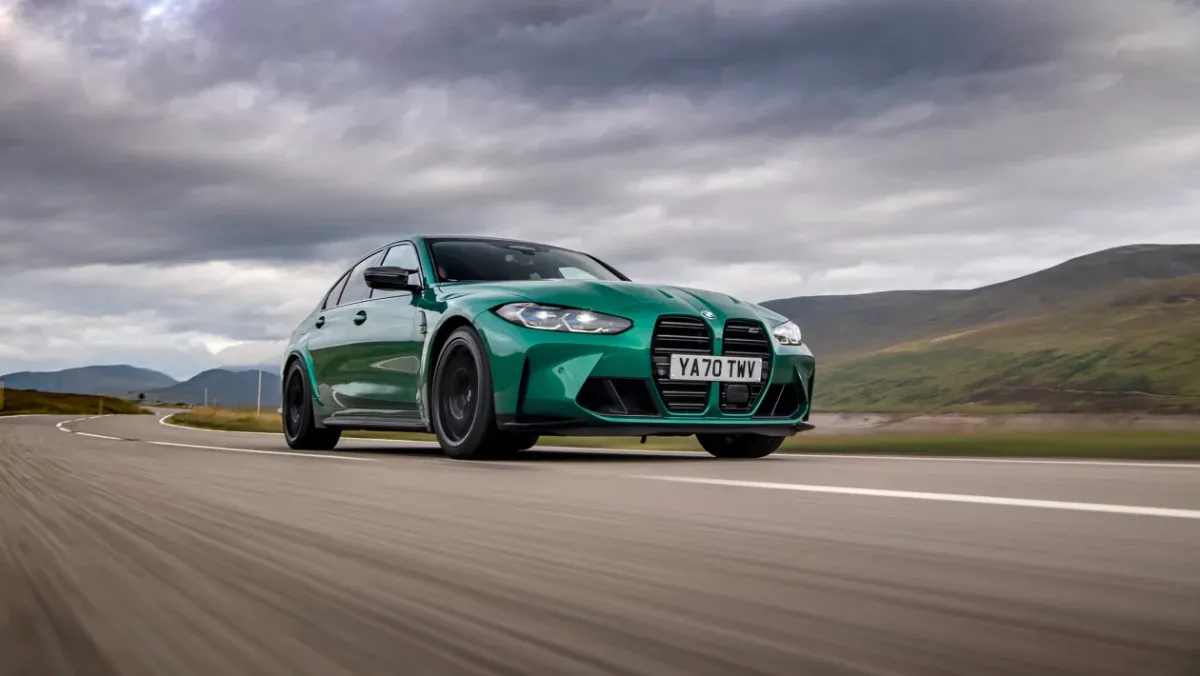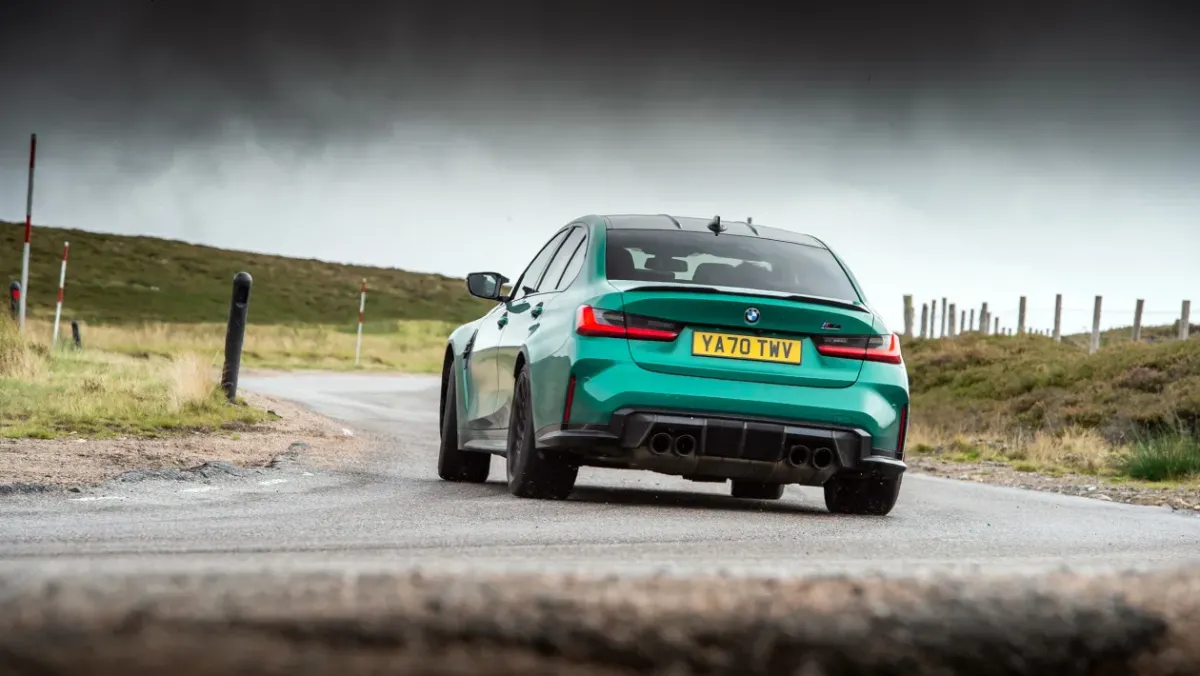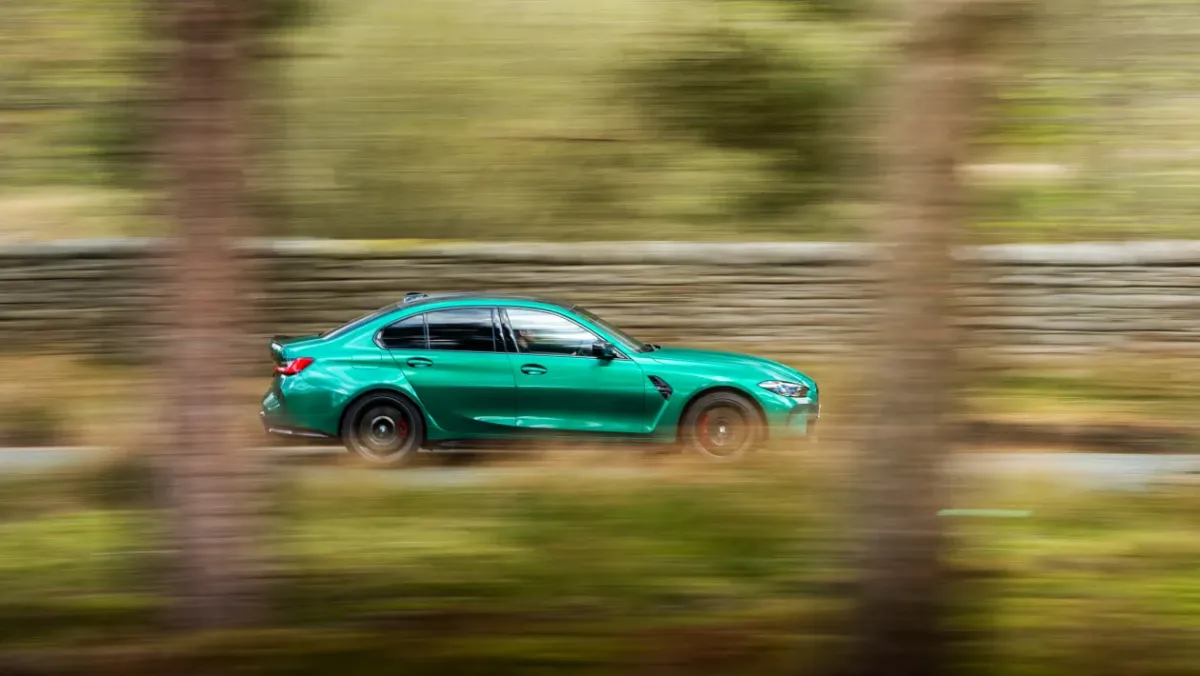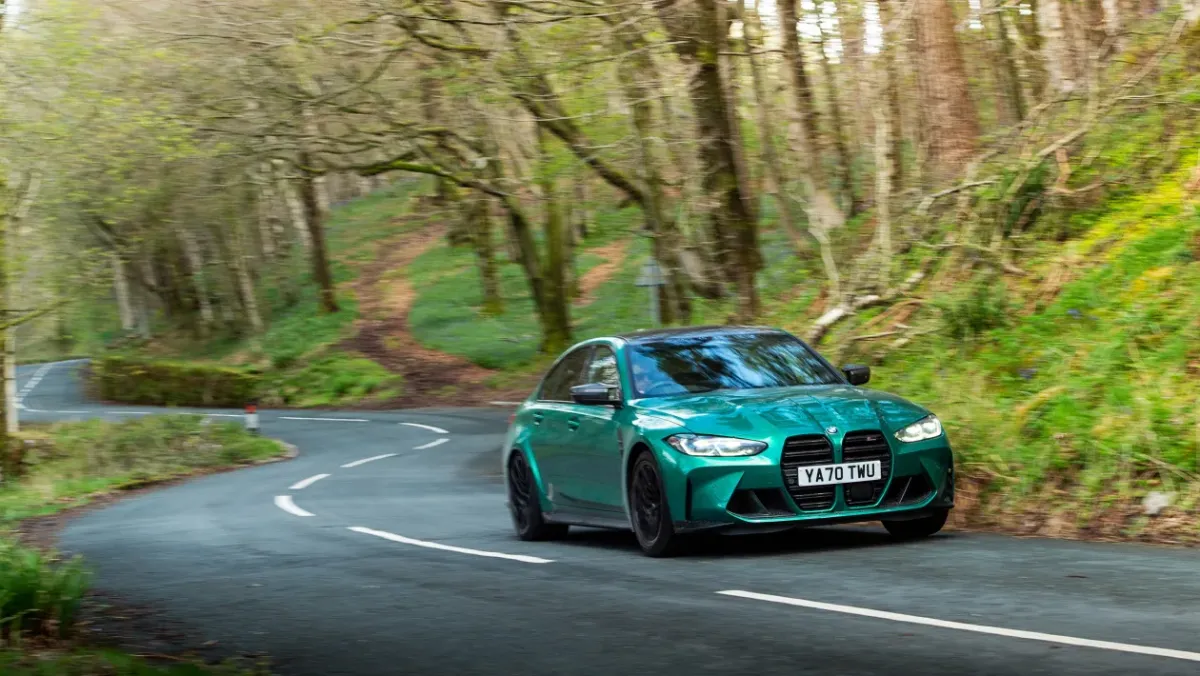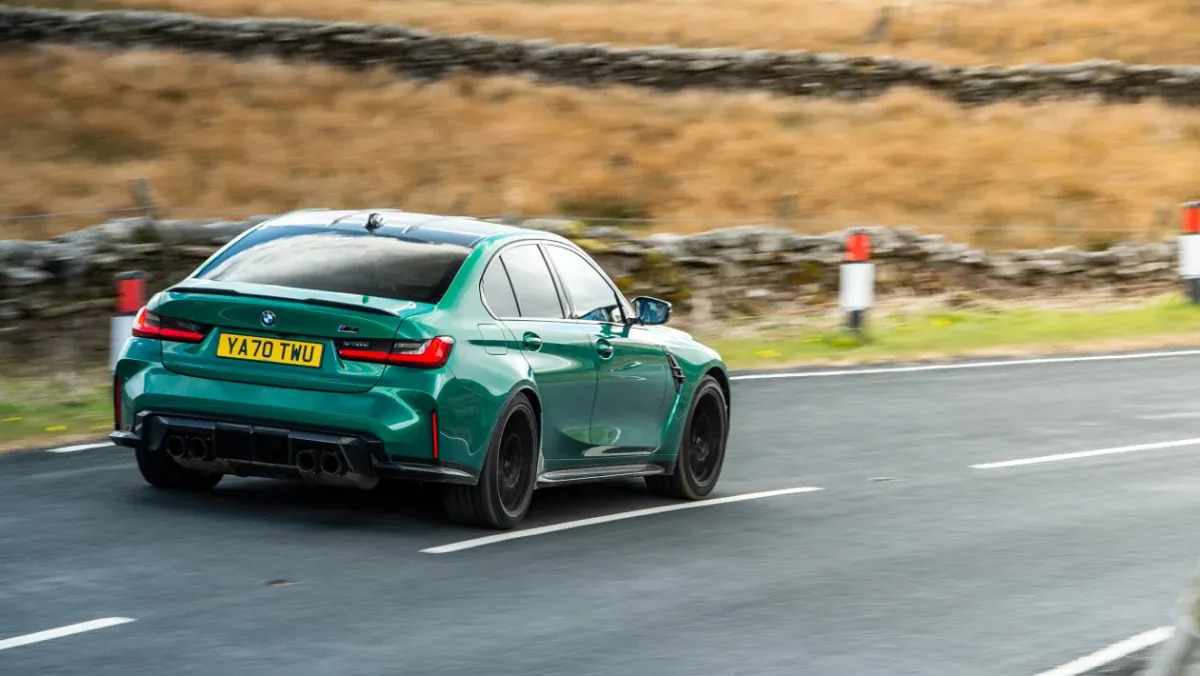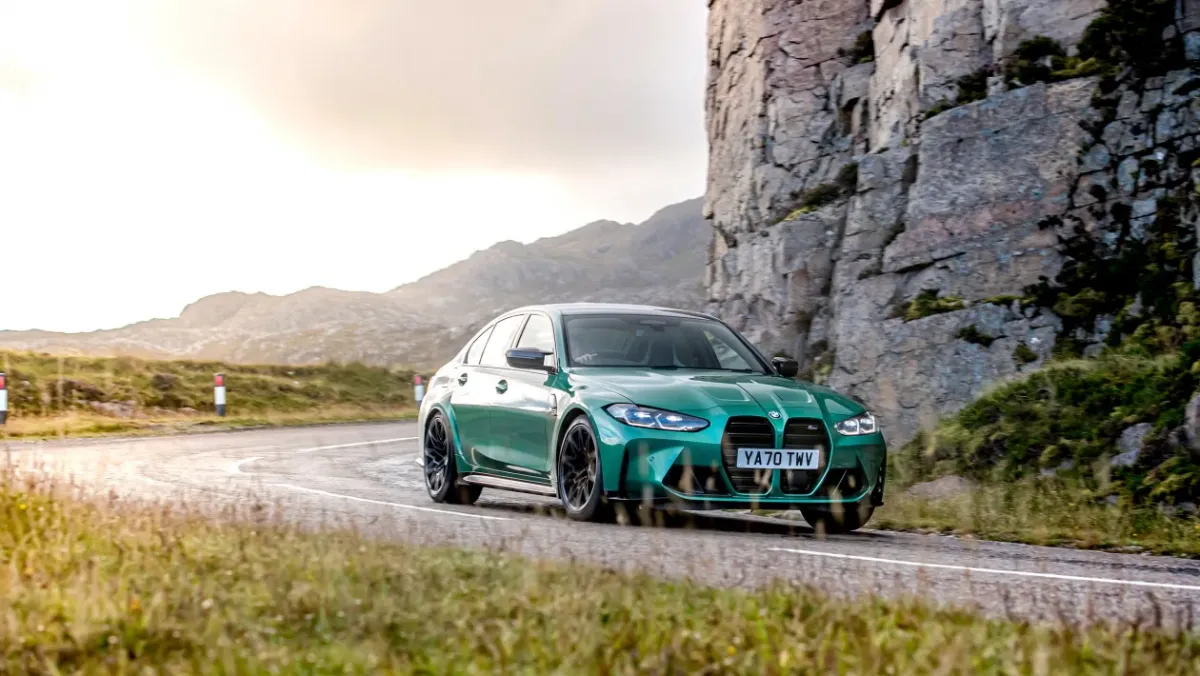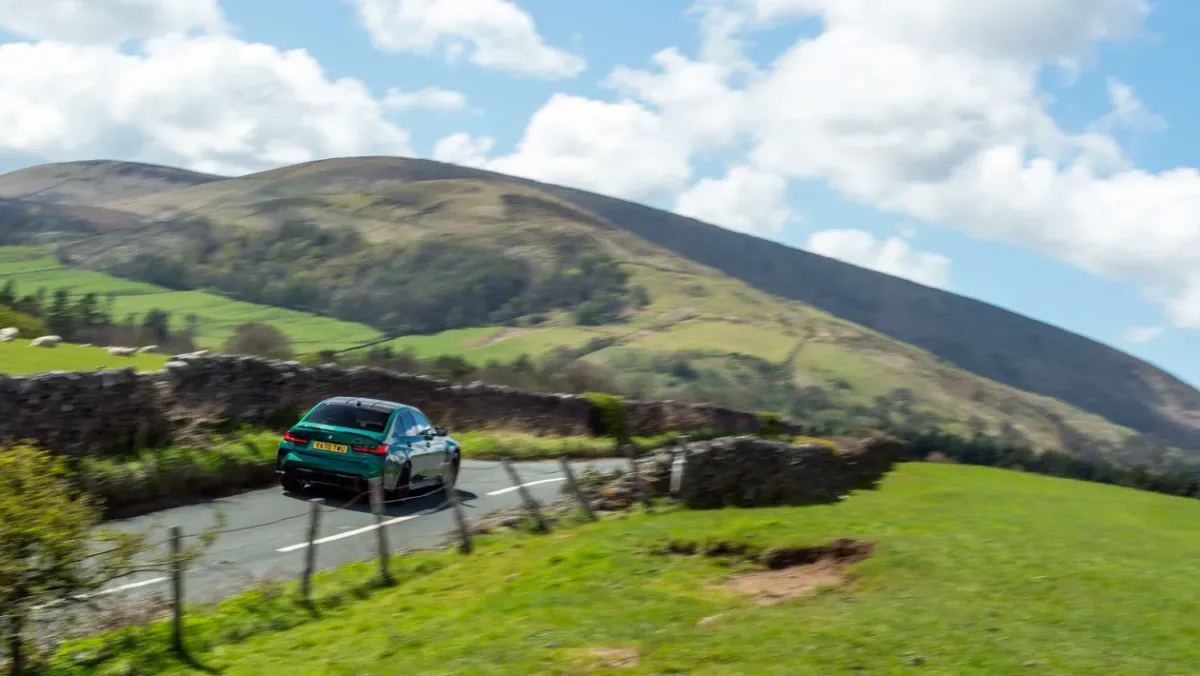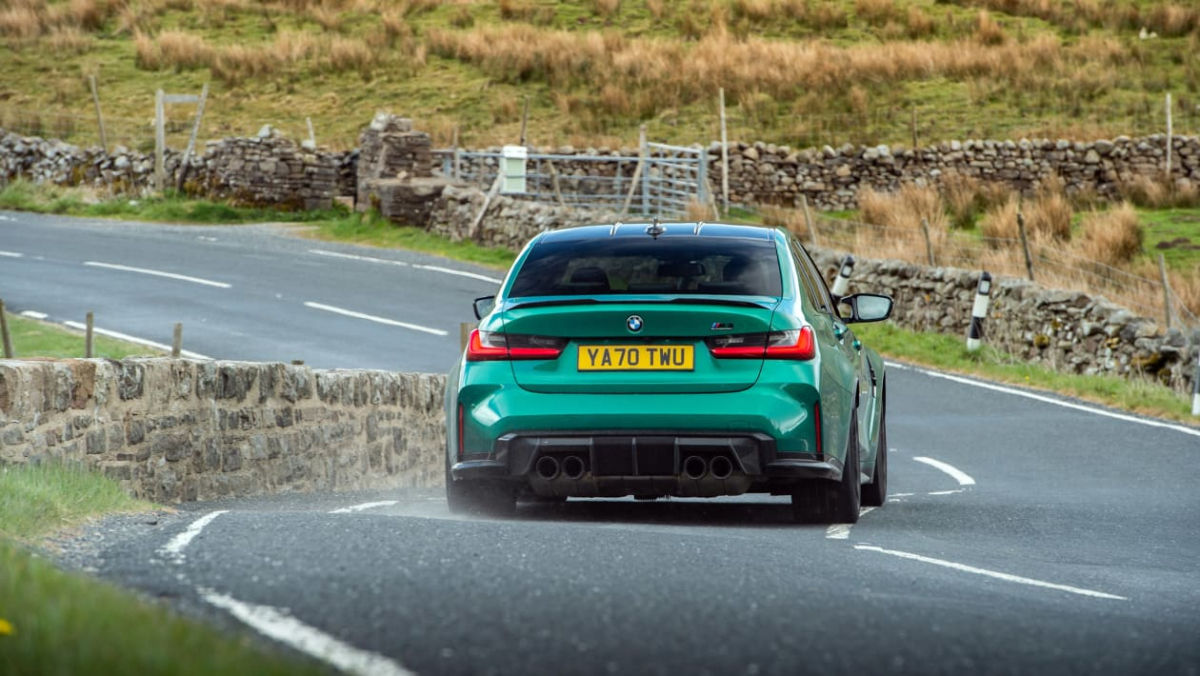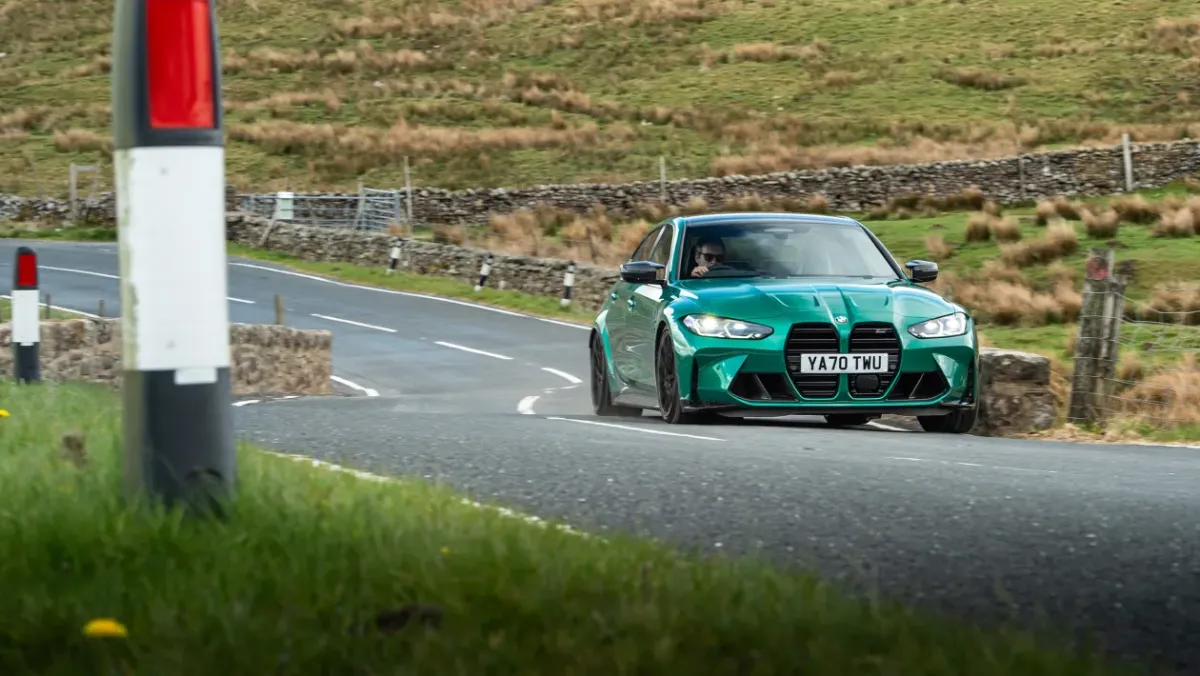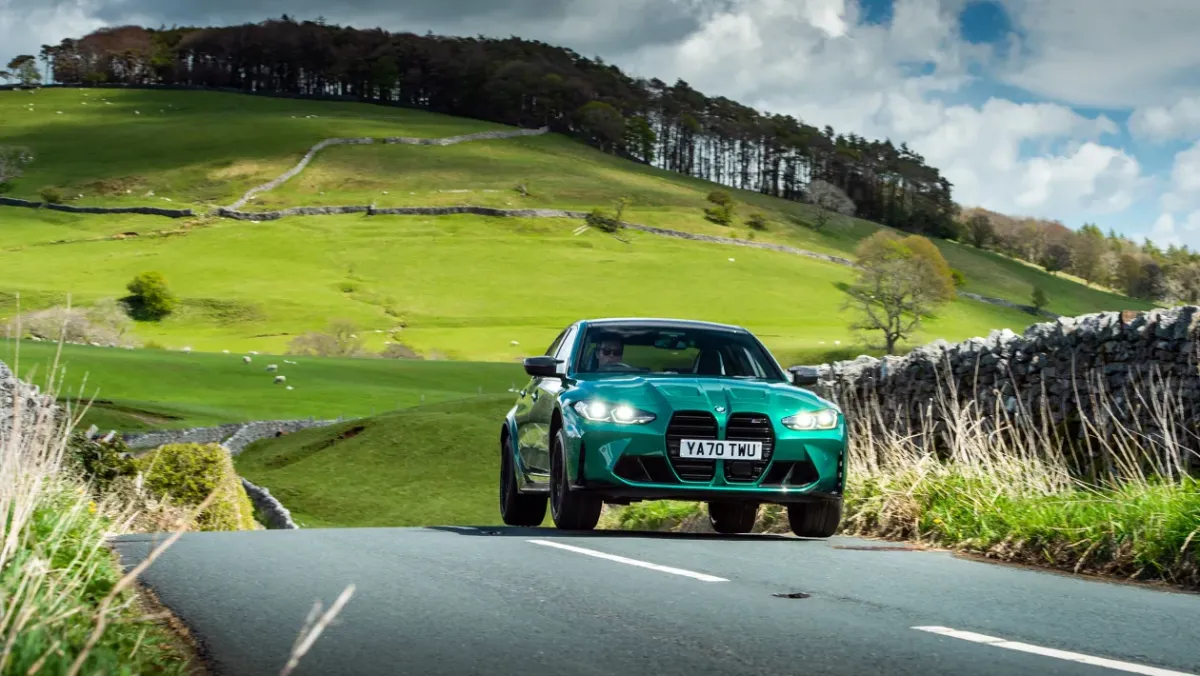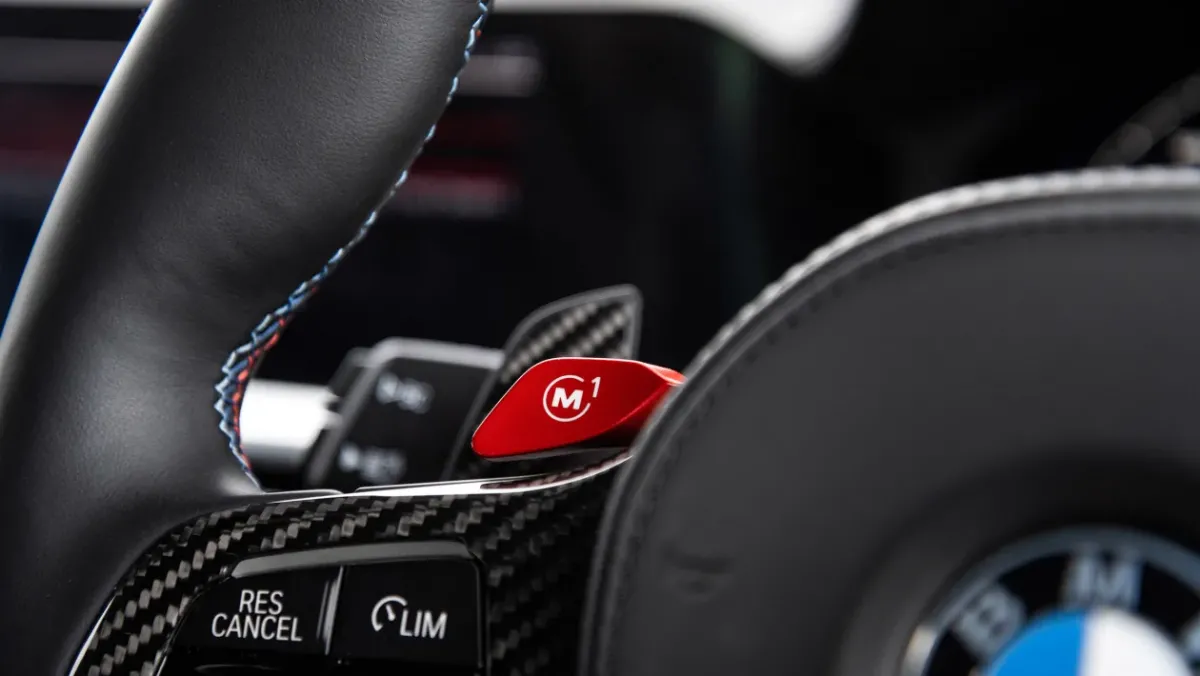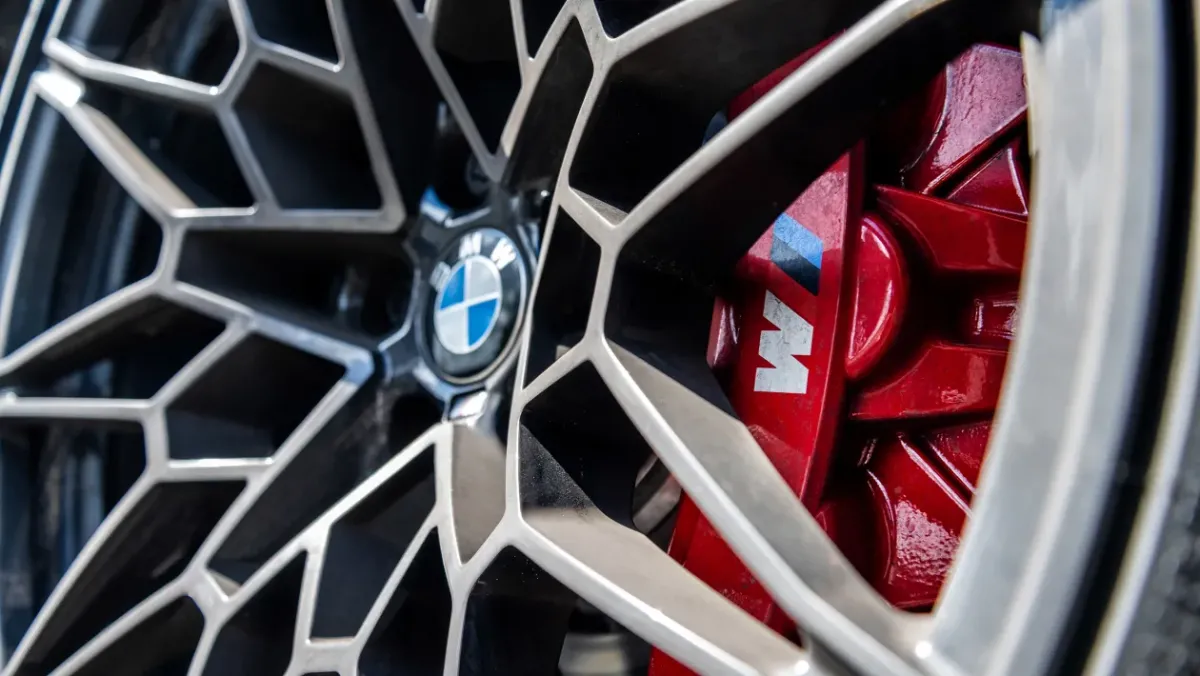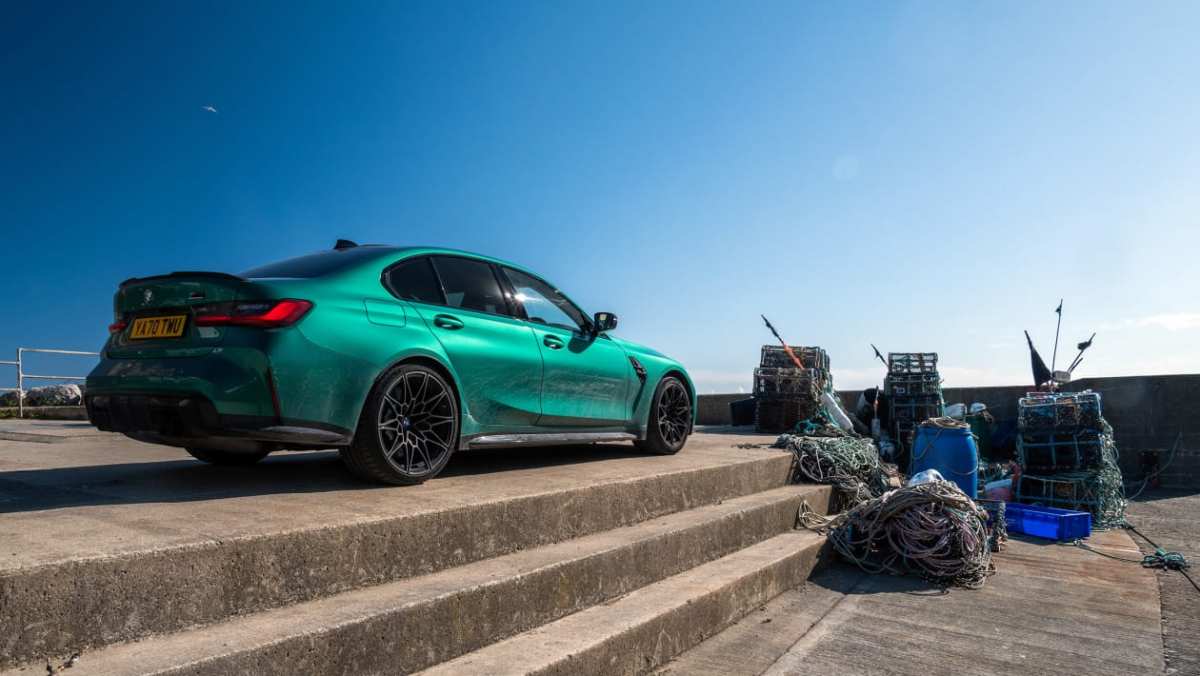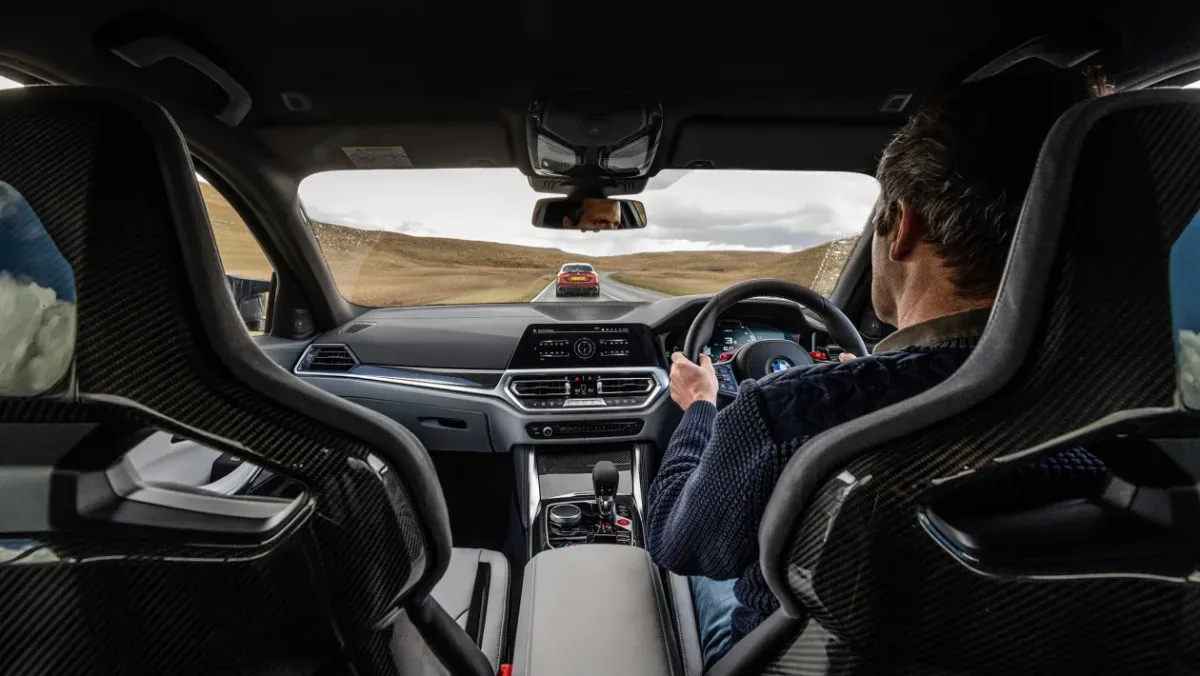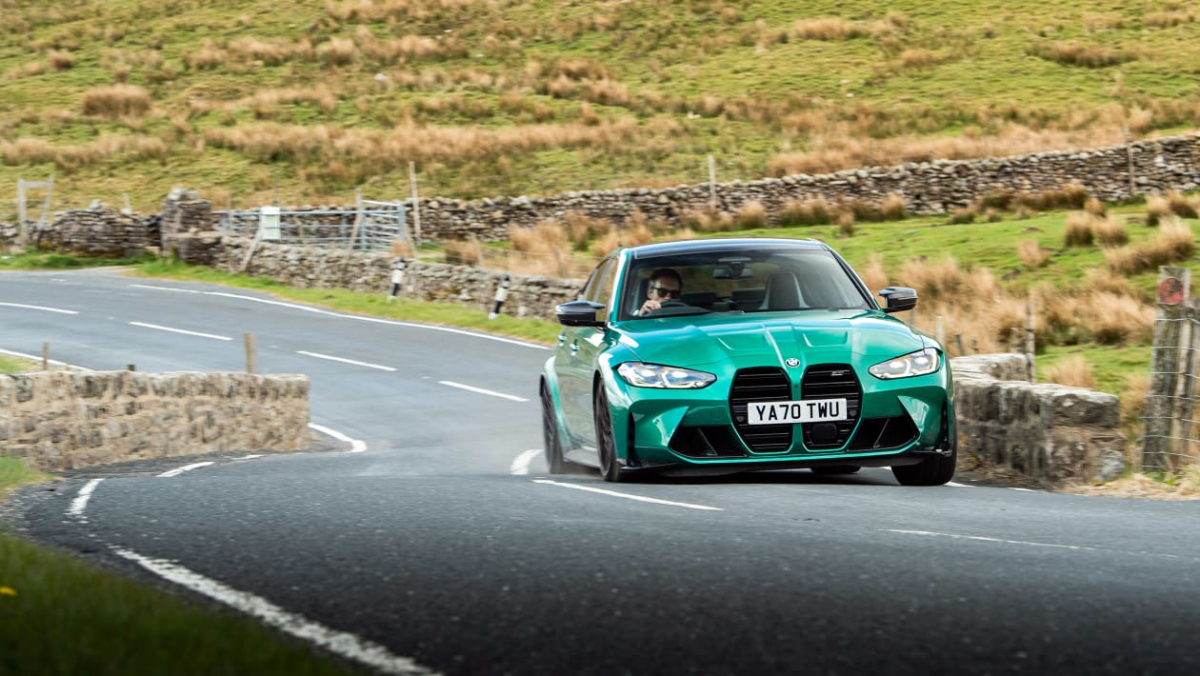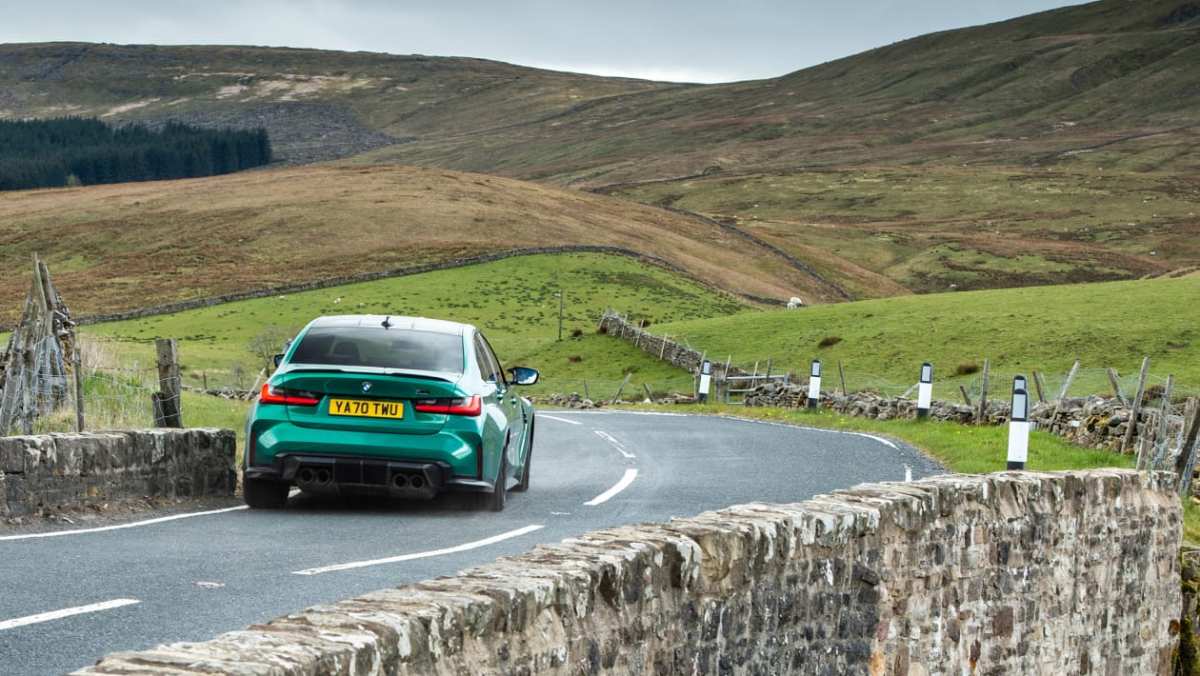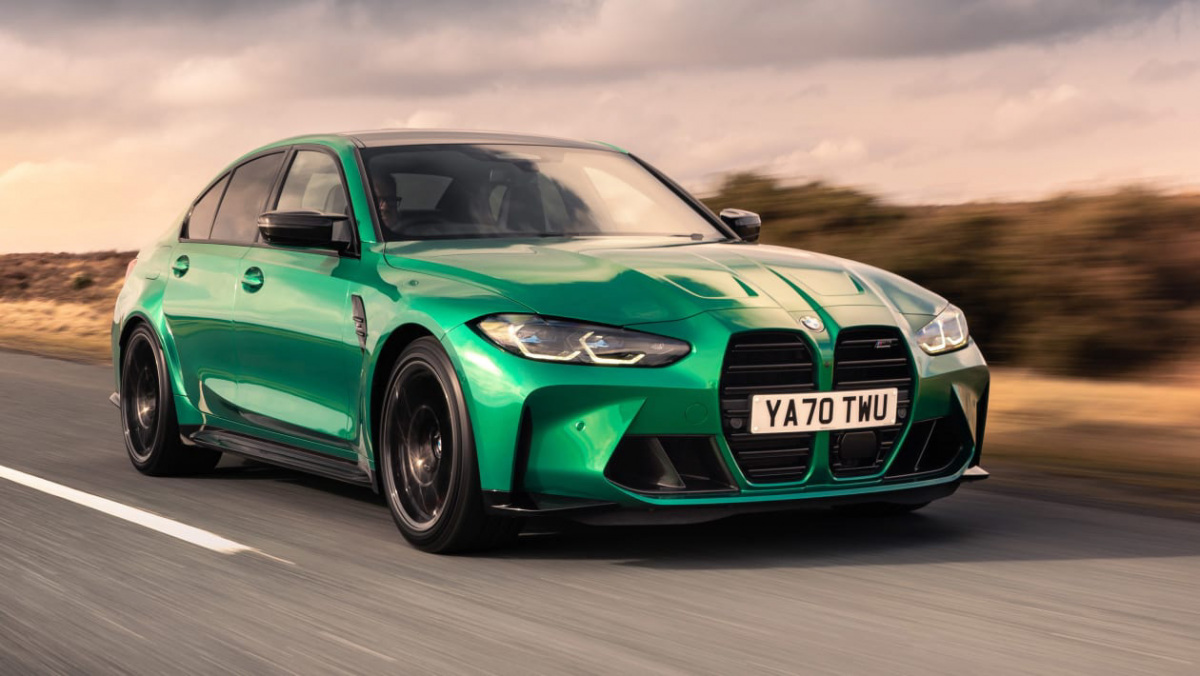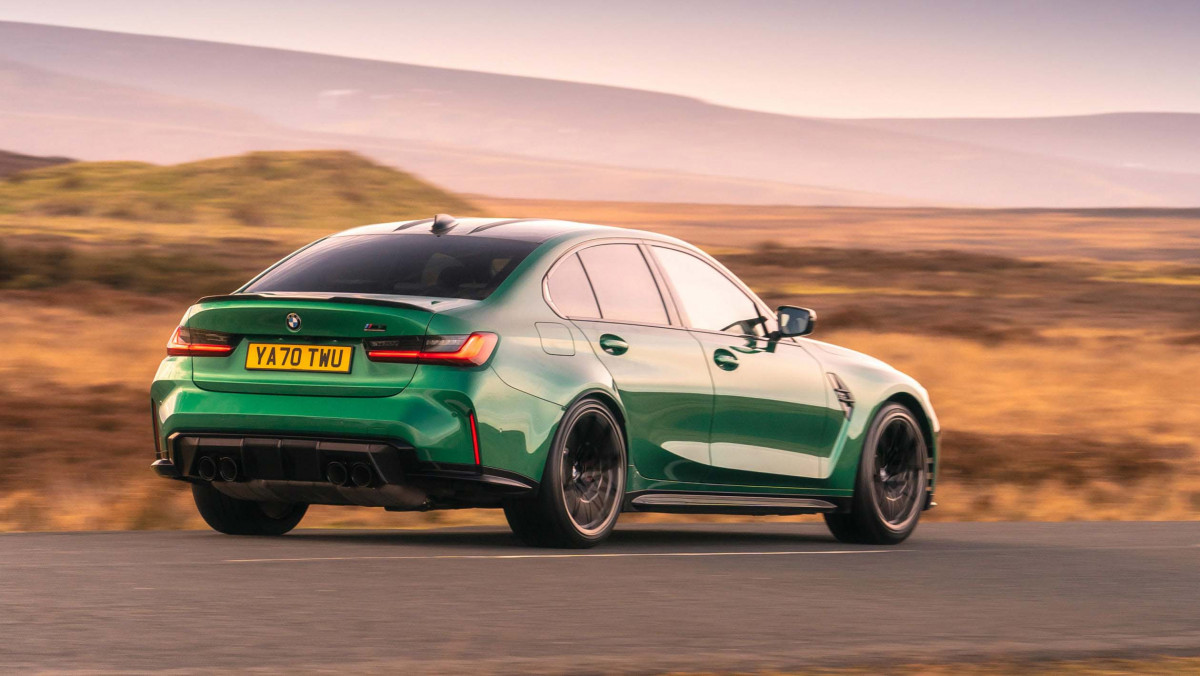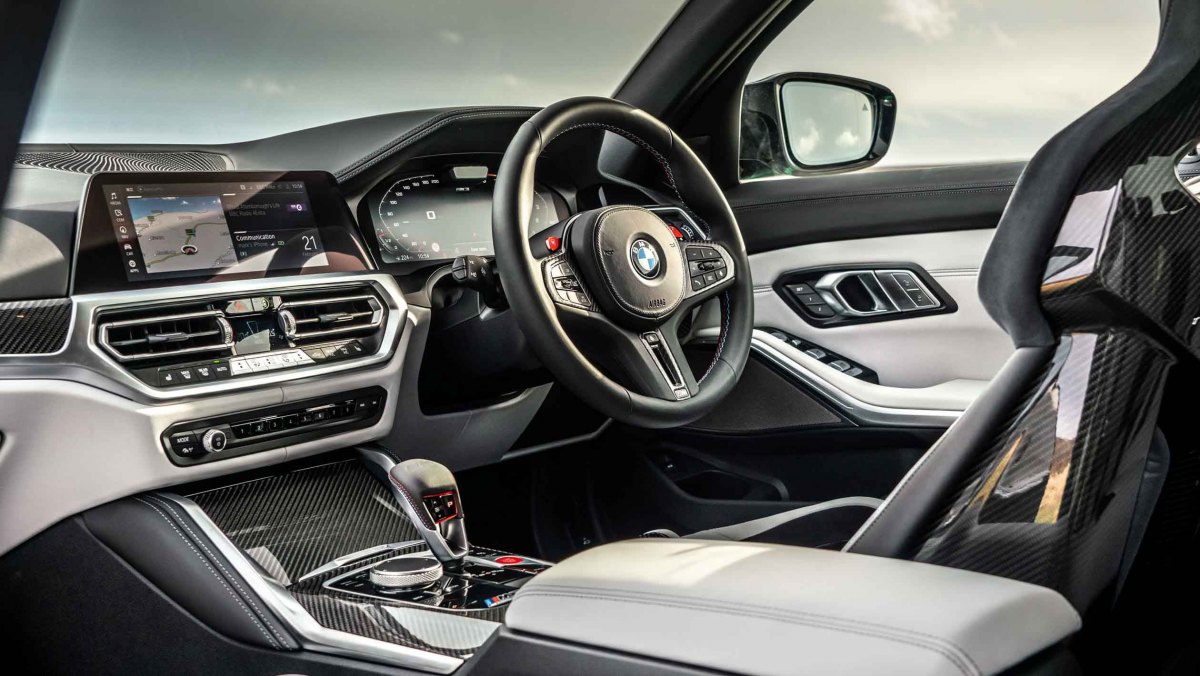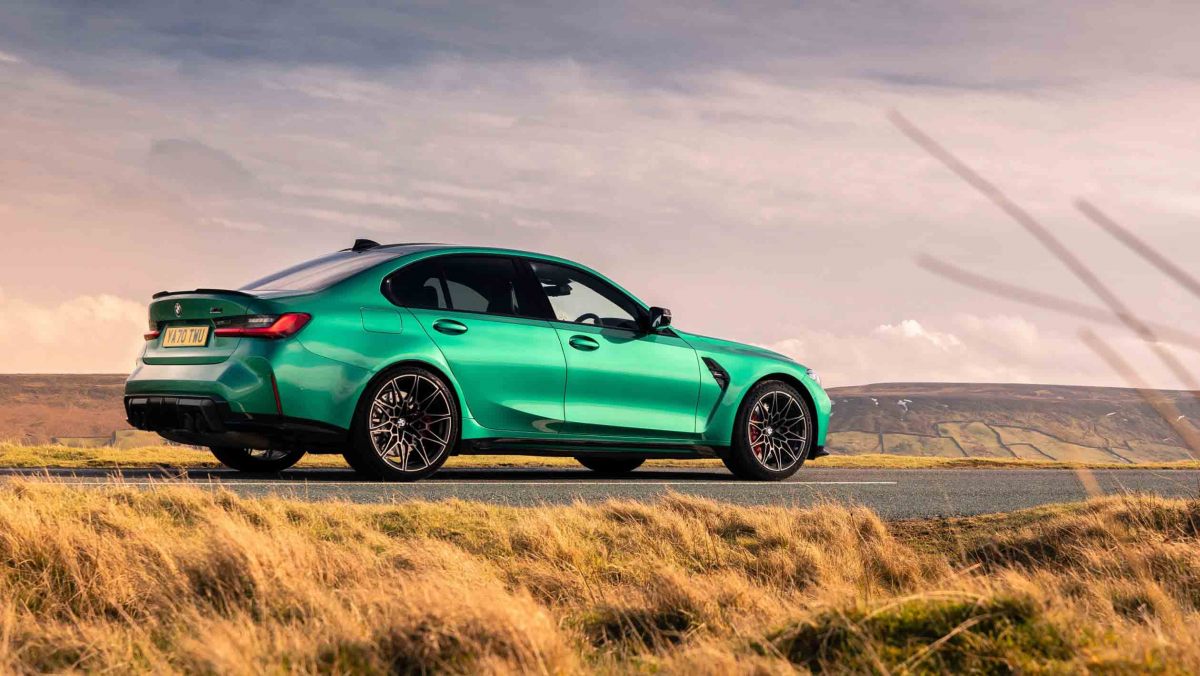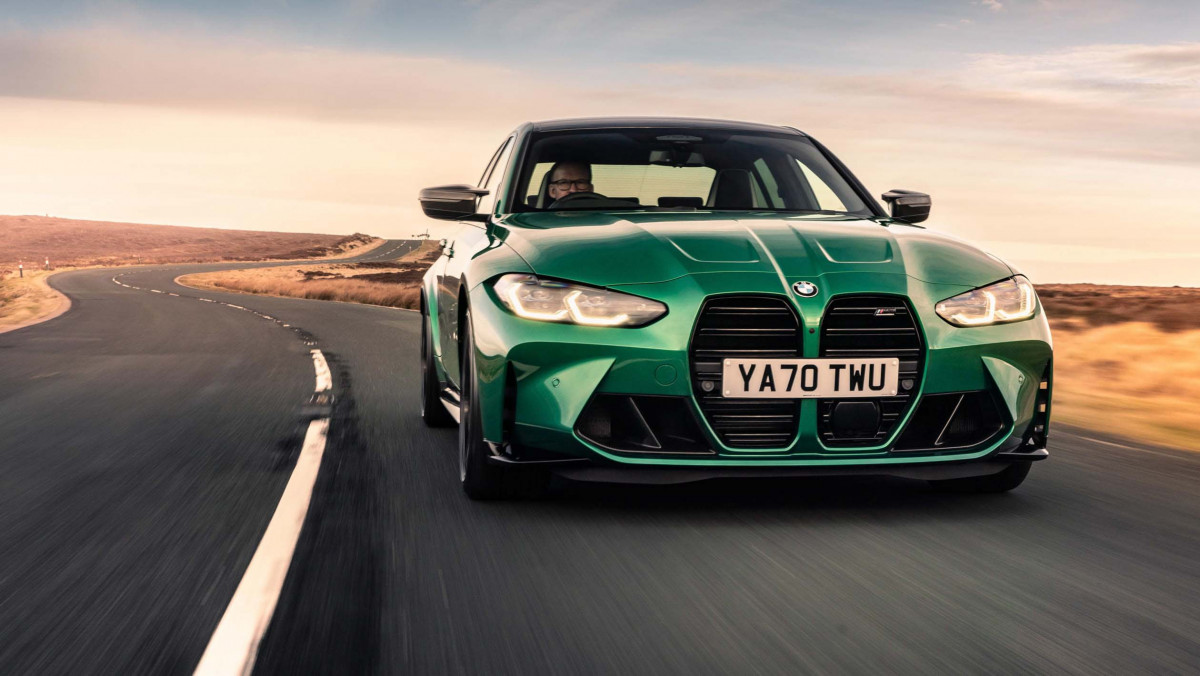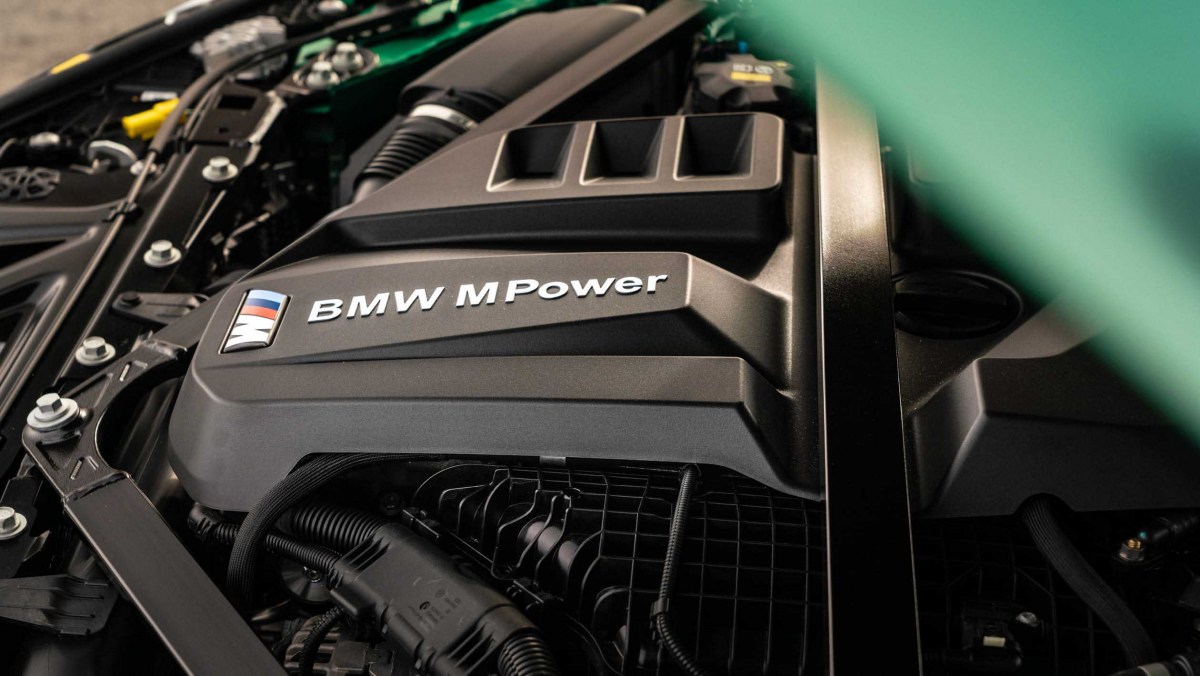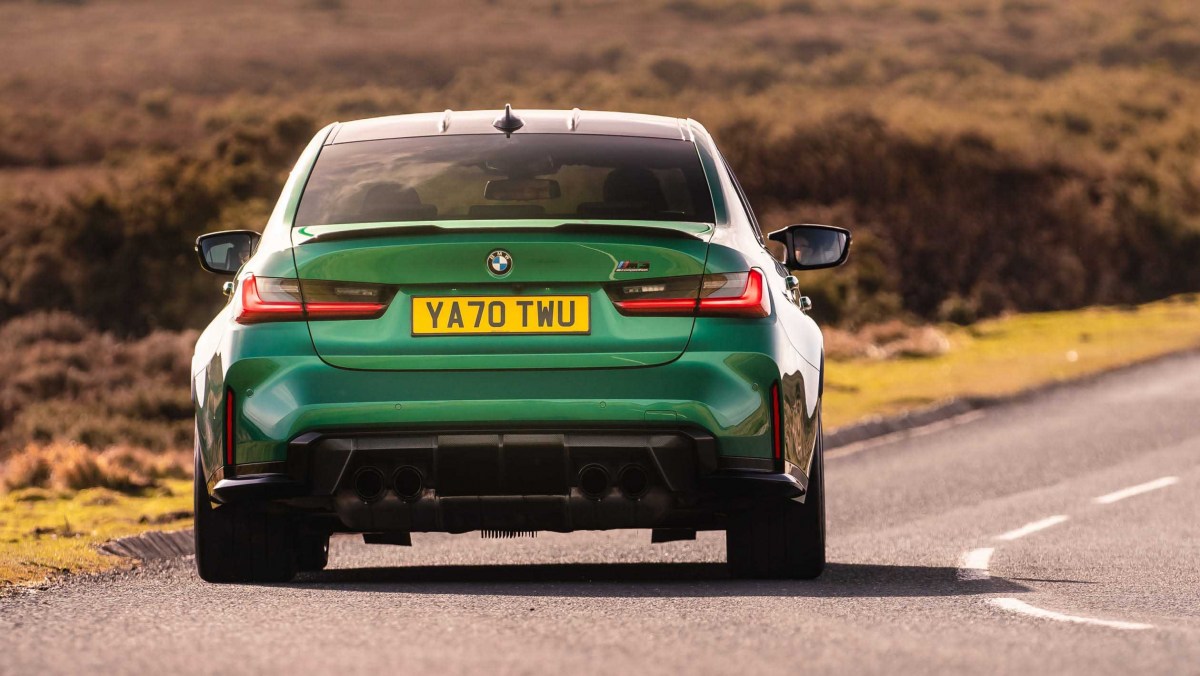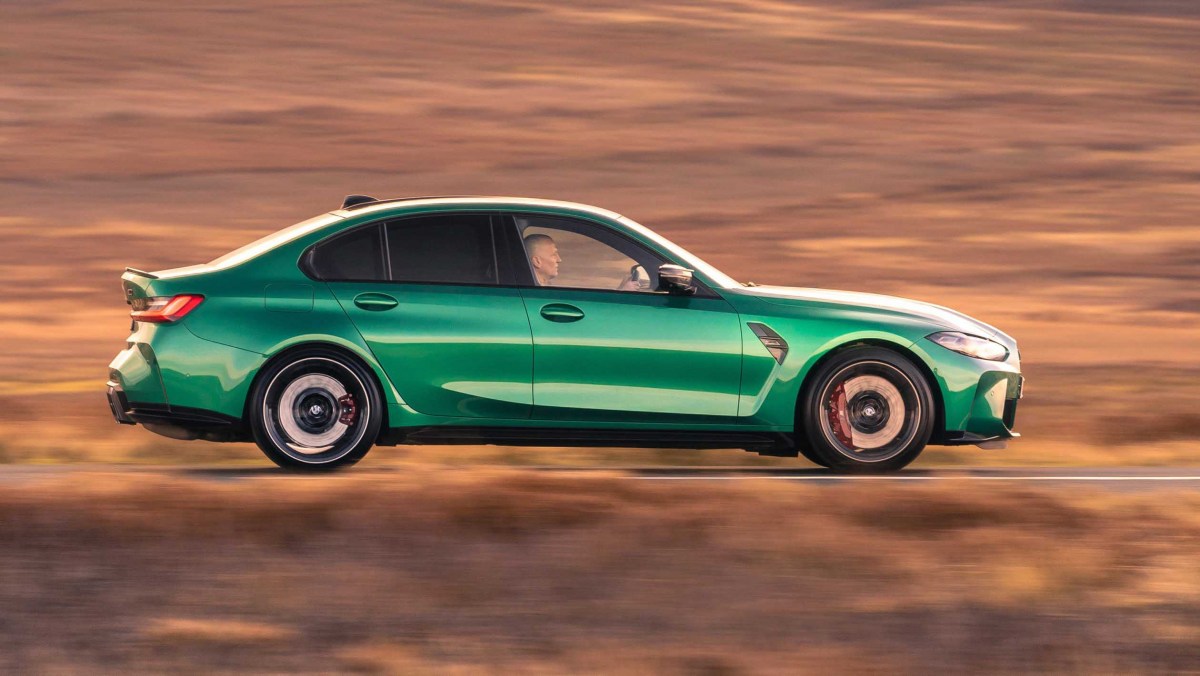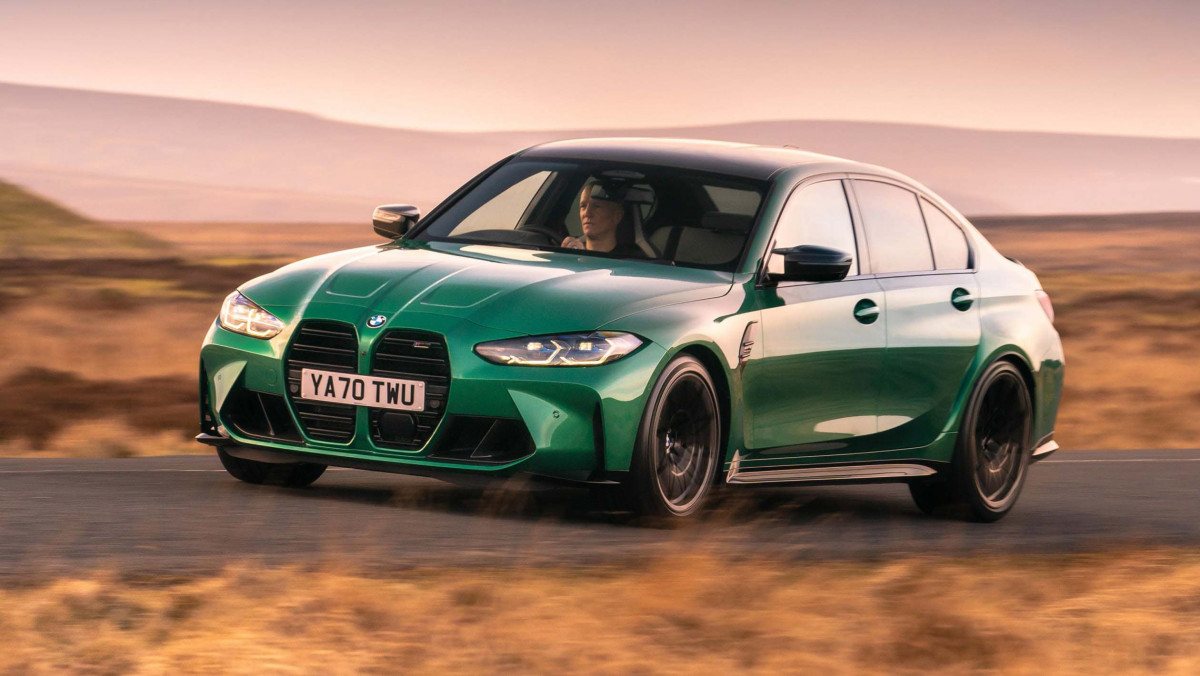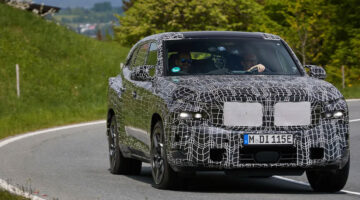It’s bigger and heavier than before, and is now auto-only. So can it copy the new M4’s trick of still being fun to drive? You bet it can
| As quick and capable as you could possibly want | |
| Bigger and heavier than you’d possibly like |
PRICE from $103,518
BMW’s M range used to be a straightforward concept to get your head around. There was the small, racy one: the M3. There was the bigger, more relaxed one: the M5. And that was pretty much it. But that was also 30‑plus years ago and it really is time we moved on, isn’t it? After all, BMW M has.
Yet as with any institution there has been controversy with such evolution, but none has felt it with quite so much vigour as this new G80-generation BMW M3 Competition. Debuted with a challenging new look, the use of a torque converter automatic transmission and the lack of a six-speed manual option, plus the availability of all-wheel drive and a substantial weight gain across all its forms, the latest M3 Competition had a mountain to climb before it even hit the ground.
> BMW M5 CS 2021 review – a class act that reaffirms the M division’s brilliance
And yet, perhaps because of these very changes, this new M3 doesn’t just shut down its critics, but fights back with perhaps the most congruous and superbly engineered package in decades. In other words, the M3 Competition might not have held this form before, but then that doesn’t mean it’s not an astounding achievement. It’s not exactly the small touring car-like road-racer we associate with the iconic M3 badge, but as a modern sports saloon there are few, if any, rivals that match it.
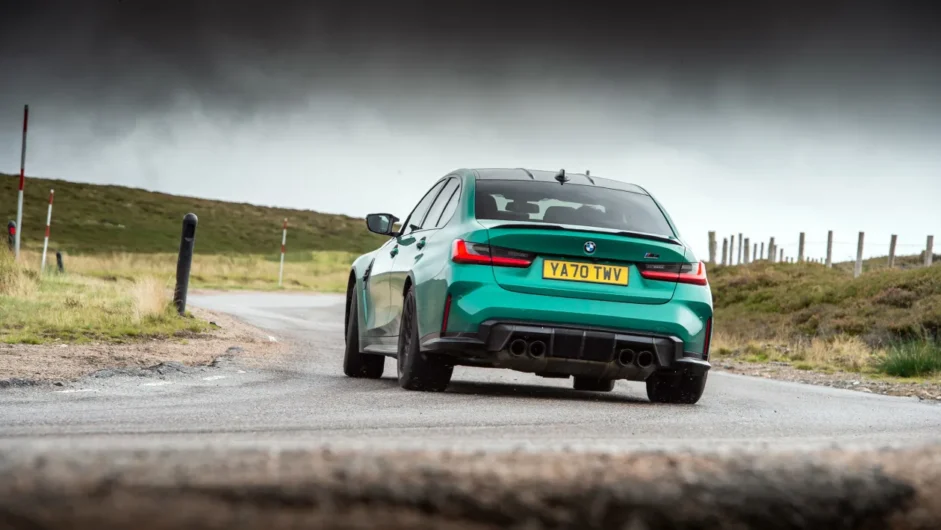
Prices, specs and rivals
The G80 generation has brought with it some curious variations in trim and specification that can quite dramatically vary how much your M3 will cost. The base price for a rear-wheel-drive M3 Competition is $99,775 – the non-Competition and its no-cost six-speed manual, thanks to the almost non-existent take-up of the standard model last time around.
Next up is the M3 Competition xDrive, a model that is specified identically to the rear-drive model, but throws in a couple of front driveshafts that can then also be de-coupled if so desired. The xDrive starts at $103,420, and is totally indistinguishable from the standard M3 Competition from the outside.
Things start getting complicated (and expensive) from here though. In terms of options, most are grouped into packages, starting with the M Driver’s Pack, which ups the top speed from 250kph to 290kph and signs you up for an Advanced M Driver’s Course – yours for $2762. Next up is the M Pro Pack, which bundles the above with a set of carbon-ceramic brakes with gold calipers (blue, red or black calipers are available on the standard cast iron discs) that’ll be $10,543.

There’s then the M Carbon Pack; this swaps out various gloss black elements on the door mirrors, side vents and lip spoiler for carbonfibre, while also ditching the standard seats for fantastically supportive carbon bucket ones – an extravagant $8900, but then also very desirable. A further Visibility Pack ($2000), Technology Plus Pack ($2300) and Comfort Pack ($1300) are also available.
The good news is that if you want a bit of everything, there’s the Ultimate Pack, which bundles all of the above together for $14,835. But if you want ceramics, you’ll still need to tick the M Pro Pack, though, taking the price up to just under $125,000. Order your M3 in 2022 and you’ll also be able to order the heritage badges for the nose, bootlid and centre caps for $400.
A BMW M3 Competition’s rivals are in something of a state of flux, with AMG’s W206-generation C63 S still to be revealed. We do know, however, that it’ll ditch the M177 V8 engine in favour of a turbocharged four-cylinder paired to an electrified rear axle. While it’ll almost certainly lose some of its character, performance isn’t likely to be compromised, so if you’re into an AMG with a raucous soundtrack, best to start trawling Mercedes-Benz dealer stock to snap up one of the remaining W205s left on the forecourt.

Instead, the M3’s greatest challenger comes from Northern Italy. The $92,705 Alfa Romeo Giulia Quadrifoglio pulls at the heartstrings like few others, and while its powertrain might match the BMW’s, the car as a whole is significantly lighter, making it a quicker car across the ground – if you can get the power down. This lack of weight also gives it a much more delicate character, something doubled down upon with relatively soft spring rates and preference to flow with the road surface rather than pummel it into submission. We love the Alfa Romeo, and while it’s almost impossible to call one better than the other, the two cars’ variability makes the sports saloon market a great place for any buyer.
Audi doesn’t have a direct saloon rival, and while the RS4 Avant and RS5 Sportback are potent, neither is anywhere near the M3 in terms of engagement and ultimate performance. The Lexus RC-F is a similar story – a great nostalgic V8 coupe (with some superb build quality), but ultimately outclassed.
BMW M3 Competition specs
| Engine | In-line 6-cyl, 2979cc, twin-turbo |
| Power | 503bhp @ 6250rpm |
| Torque | 479lb ft @ 2750-5500rpm |
| Weight | 1730kg (295bhp/ton) |
| 0-100kph | 3.9sec |
| Top speed | 250kph (limited) |
| Price | $103,518 |
- Engine, gearbox and technical highlights
Try to bare with us here, but if you’re this far into our review chances are you’ll be into a bit of BMW-specific engine chat that we can’t guarantee won’t devolve into acronyms and engine codes.
So. The BMW M3 Competition utilises a 2993cc closed-deck straight-six engine with two mono-scroll turbochargers. It’s codenamed S58, and while not bespoke to BMW M, it is a very heavy revision of the modular B58 unit that’s found elsewhere in the BMW range, to the point that it has totally bespoke headers, intakes, exhaust, internals, turbochargers, cooling and ancillary controls. As a result, it has a slightly different cubic capacity (down 4cc) and produces much bigger numbers than the S55 unit it replaces.
Key areas that distinguish the two motors are the headers and turbochargers. The M3’s headers feature expensive 3D-printed internals that optimise the flow of oil and coolant while also removing excess weight through their additive manufacturing technique, trimming material where traditional methods such as casting or milling are unable to do so. The cubic capacity is slightly down on account of having a larger bore, but shorter stroke, allowing for slightly larger valves.
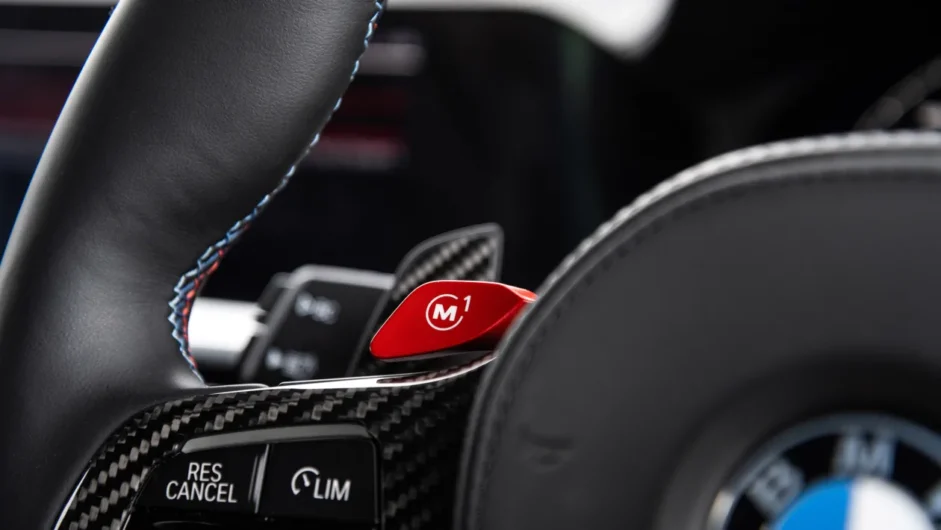
These bespoke elements complement BMW’s usual roster of valvetrain tricks, including double VANOS variable intake and exhaust timing, and Valvetronic fully variable valve timing.
The crank, pistons and connecting rods are all of forged aluminium, and the crank pins spherically ground which help the bearings run more smoothly. This process isn’t often used in production engines of any specification – it’s usually reserved for competition units – but it makes the S58 ripe for further tuning in models such as the incoming M4 CSL.
The turbochargers are two mono-scroll units that each run off three cylinders. These again are over-specified for the M3’s 503bhp rating, ensuring that they are well within their operating parameters, making the engine itself actually quite unstressed, which isn’t something you’d naturally say given it’s extraordinary performance.
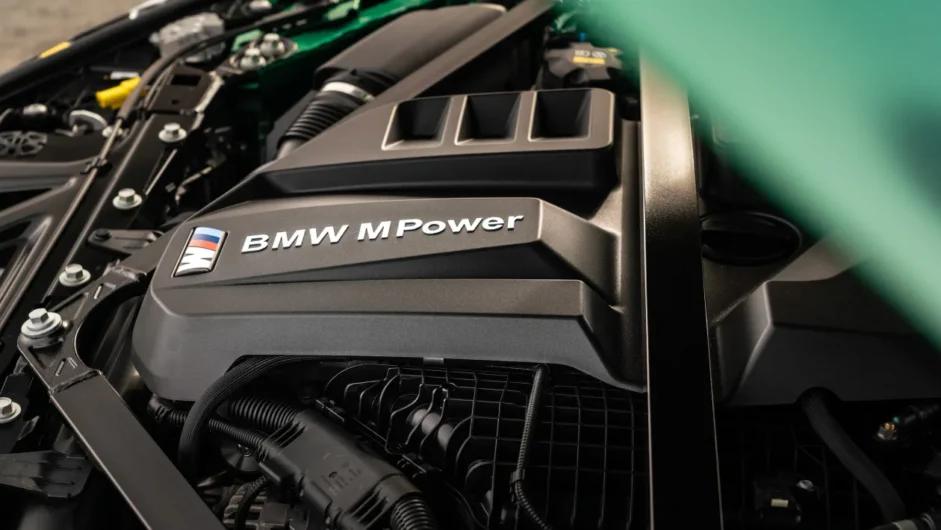
A peak torque rating of 479lb ft is available in a tabletop-like plateau between 2750 and 5500rpm, with the limiter coming in at 7250rpm. Initial models we drove did have a subtle tail-off right at the top of the rev range, but subsequent software updates have made the latest cars feel more enthusiastic in their reach to the red line.
The transmission is where things get a little more complicated, (overseas market base M3s are available with a six-speed manual at no extra cost, although there is a substantial 73lb ft torque deficit to keep it from melting), but the DCT has been ditched, too.
Instead, the only transmission option on Competition models is a ZF-sourced eight-speed torque converter automatic. The decision was made to allow for a higher torque rating, yes, but also because BMW says the automatic’s changes are pretty much as quick as they were in the old DCT, and with more time and money to spend on calibration given its use elsewhere in the 3-series range, it was a compromise worth making.
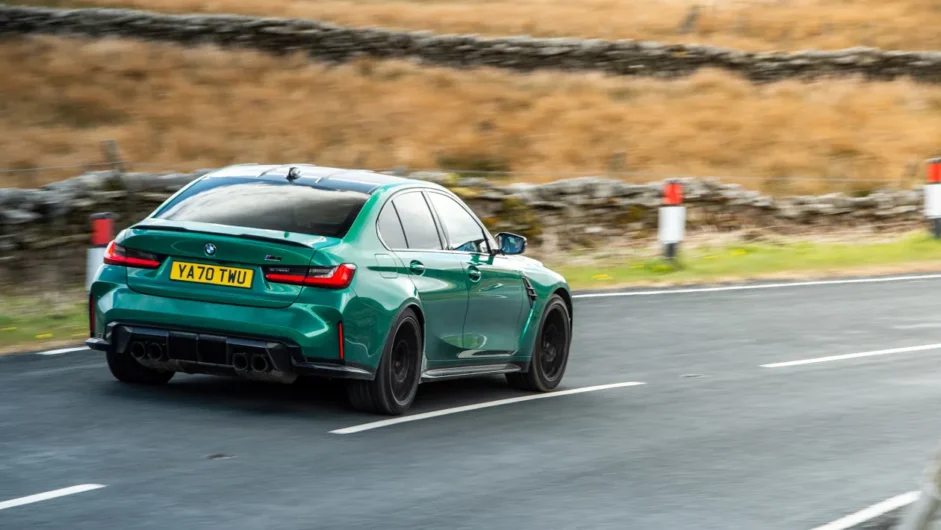
Finally, the chassis has undergone plenty of its own changes. The M3 saloon maintains the usual upgrade package shared with the two-door M4 comprising the bonnet, wings and front fascia. From the A-pillar back, however, the M3 is a curious mix, with standard 3-series in the door skins and bootlid contrasting with the now trademark jutted wheelarches that flare out in a most unusual way beyond the rear door, eventually meeting the very aggressive rear bumper.
The reason for all this is to fit the M3’s substantially wider wheel and tyre package, which sits on wider tracks front and rear. We could go on for hours about the detail changes to the chassis, and there are many, but what you need to know is that both the spring-strut front and five-point multi-link rear suspension are bespoke, mostly made up from forged aluminium, with bespoke geometry and adaptive dampers.
Some pretty extreme negative camber and toe-in both give much more confidence to the steering, while the EPAS system itself has been totally redesigned, giving the steering much more precision and resilience over rough road sections. The wheels are staggered for the first time on an M3 saloon, too, with 19-inch wheels and tyres at the front and 20-inch versions at the rear. Standard rubber is Michelin Pilot Sport 4 S, but Cup 2s are available as an optional extra.
- Performance and 0-60
Firing the engine is a case of putting your foot on the brake pedal and thumbing the scarlet starter button on the transmission tunnel. No clutch pedal to depress, no gearlever to waggle to check it’s in neutral; you’ll need to leave the UK if you want to try a G80 M3 (or 4) with three pedals and a stick. Regardless, the S58 motor fires with a satisfying burble. It may be augmented through the speakers, but it’s as authentic a sound as you could hope for. Outside, however, even with the exhaust valves open, the latest emission filters stuffed into the system result in a rather muted tone, but it has a certain timbre and hollow resonance that suits its brutish appearance.
It’s an engine that impresses instantly. There’s a sharpness and responsiveness to the throttle action that you don’t expect from a turbocharged motor, and a sense that there’s been a great deal invested to get this just so. It’s not Ferrari or Porsche levels of rapid response, but the M3’s straight-six certainly doesn’t feel or sound like an engine that originally saw service in a performance SUV. A handbuilt in-line four or a CSL’s straight-six it might not be, but it’s streets ahead of the F80 M3’s power plant, both in terms of first impressions and what it’s capable of.
It’s the reach of this engine that you can’t get away from. Regardless of the gear you’re in, there is either just the right amount of torque to catch a ride on or you find yourself in the peak of the power band and able to judge each 100rpm increment with measured movements of your right ankle. As the revs rise the soundtrack builds, matching the pace to each octave for an immersive experience. It’s not as hard-edged nor as raucous as an M2 CS’s 3-litre when you reach its peaks, but it suits the nature of the M3 as a consequence.
On paper, this generous feeling of power and torque is mirrored by the M3 Competition’s performance times, with the rear-drive model reaching 100kph in 3.9sec on paper, but with a dry and grippy surface it will eclipse that figure pretty easily. The all-wheel-drive M3 xDrive will do the same sprint in 3.5sec on paper, and again, with ideal conditions will slip under the claimed time.
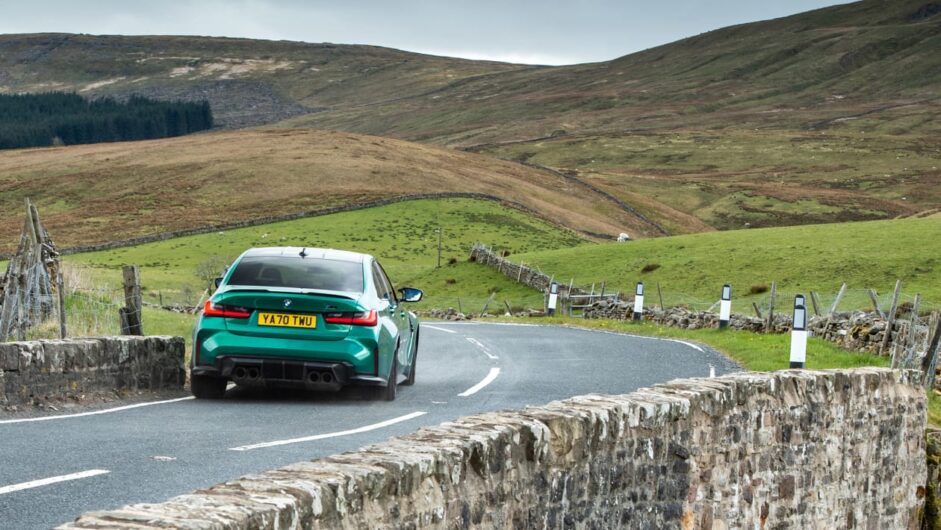
Top speed is a limited 250kph, rising to 290kph with the M Driver’s Pack selected regardless of driven wheels, making the M3 in any guise a very fast car. Find somewhere for the new M3 to let rip and the result is a car that disguises its 1730kg bulk like it has no right to. The responses are instant, the speed it gathers unrelenting, piling on as the revs rise and your gear selection gets higher. Very quickly you’re short-shifting, forgoing the buzz of the engine’s higher echelons for the torque shove that’s so accessible, and in the process hopefully avoiding a trip to a magistrates’ court. Its predecessor was quick, capable of getting you to the next braking point at a considerable lick. The G80 not only betters it, but does so with more sophistication and tangible depth of quality.
- Ride and handling
What’s the new M3’s biggest step on? The fact that it no longer wants to hurl you into a ditch the first time you open the throttle on anything but a billiard table-smooth surface. You sense the improved body control within the first few kilometers; the ride feels more settled – though for some it will still be too harsh even in its softest setting – and more capable of absorbing the surface and being able to filter out the unnecessary noise. The springs and dampers feel more compliant and more suited to the road, softer in their actions and working in tandem with the stiffer shell that has allowed BMW M’s engineers to tune the chassis accordingly.
On a tighter road there’s great stability under braking, with just enough pitch to not be distracting, and what lean there is as you commit the nose is at a level you can work and push against rather than having to constantly manage. With more time and experience you soon find yourself asking more of the 275mm-wide front Michelins, the resistance building through the steering wheel as they bite harder. And then it’s down to how early you want to open the throttle. Too early in the first two gears will happily stir the stability systems – this M3 is still rear-wheel drive remember, although all-wheel drive will become an option later in the year – but slacken them off a notch and there’s a big enough window to allow the rear axle to generate maximum forward momentum balanced with minimal sideways slip.
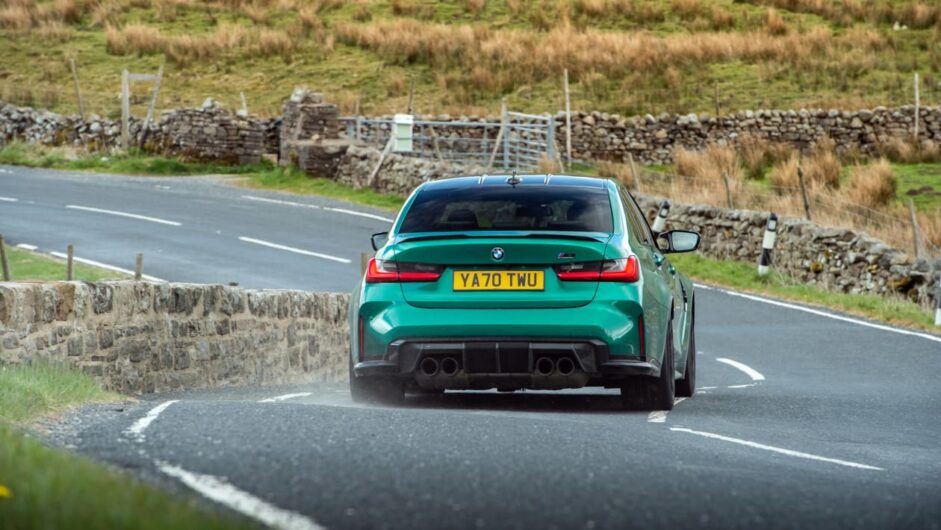
It’s on quicker roads, where the surface bucks, twists and throws up a horrid camber or two, that the G80 makes the largest gains over the car it replaces. There’s so much more composure coming back at you, with a front axle that feels more determined to seek out grip and a rear that’s able to work with the surface and flow with clarity rather than try to hammer it into submission.
And all the time the new M3 Competition is serving up its most impressive trick of all: masking its bulk. If someone told you it weighed 1600kg you’d have little reason to doubt them; the fact that you can add 130kg to that figure takes some serious processing power from your cranium to compute (although nowhere near as much processing power as the car’s various electronic systems require to make it feel this way).
Perhaps the biggest compliment that can be paid to the new M3 is that while it may have proportions more suited to an M5 from a couple of generations ago, it manages to drive, steer and thrill in as close a fashion to an M2 Competition as is possible to get from a car that’s both bigger and heavier. Thirty-five years of development has that effect.
The all-wheel-drive set-up on the M3 xDrive is similar to the one used on the M5 in that it uses an electronically controlled multi-plate clutch in the transfer case, and in normal driving is largely rear-wheel drive. Only when there’s a loss of grip at the rear axle do the front driveshafts come into play, their keenness to intervene depending on whether the car is in its standard 4WD setting or in 4WD Sport, the latter setting biased towards a rear-wheel-drive handling style.
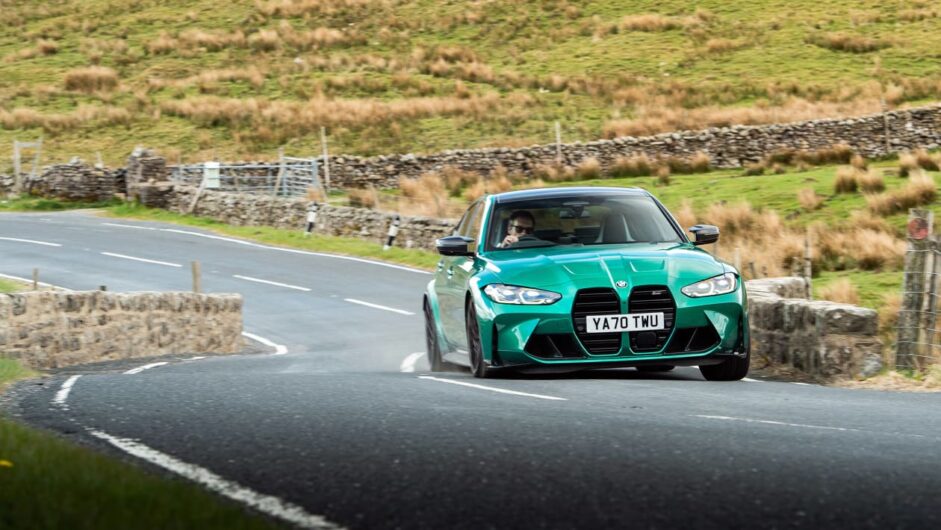
And like the M5 (but not lesser 5s, such as the M550i), you can also choose to disable the ESP system completely and then force the car into a purely rear-wheel-drive setting, too. Much of the four-wheel-drive hardware is bespoke for the M3/M4, and the xDrive also has its own front suspension tuning and geometry over the rear-drive car, plus the engine’s oil system has also been upgraded.
Of course, you can get to a point where the xDrive car does feel different, and that’s when the limit of grip is exceeded – and this is where it gets very clever. When in its normal setting the four-wheel-drive system provides the M3 with a tremendous sense of surefootedness, and an ability to deploy all 503bhp just about anywhere and at any time. In 4WD Sport mode, it will allow much more slip at the rear axle, but whereas in the rear-drive car you’d be managing that slip with the throttle, the xDrive simply hooks up after a certain point and hauls out of the corner.
It’s impressive, not just because of the outright level of performance it gives the car, but also because unlike so many other systems, it doesn’t feel particularly ‘four-wheel drive’. There’s no ‘snatch’ from the front axle as it takes up the slack, no urgent steering correction required on the exit of the corner to make sure the front wheels are pointing where they’re now powering towards. In fact, it just feels like the rear-driven chassis but with a huge dollop of additional traction.
- L/100km and running costs
BMW quotes 9.8L/100km for the rear-drive M3, dropping that to 28 for the xDrive model. In reality, those figures are just about achievable on longer journeys and motorways, rising to over 9.4L/100km in average-speed roadworks that seem to make up 50 per cent of the regions motorway network at the moment.
The numbers look different when you start making more use of the performance, easily dipping to the low 20s on faster commutes and far below when the full 503bhp is unleashed. Track useage will see this drop to single digits – not unusual, but then the track also reveals some of its other running cost considerations, which have grown alongside its weight and power figures.
On a dry, high-grip surface an M3 on cast iron brakes seems to quite happily munch through a set of brake pads over the course of a day’s hard track use, the standard Pilot Sport 4 S tyres not being much more long standing. That’s not down to the compounds of either, it must be said, but a consequence of the M3’s kerb weight and aggressive suspension geometry.
Ceramics stand up to track use better, but their replacement value, if a disc does go (unlikely, but not unheard of)… we’re talking big numbers. So while the M3 is certainly a resilient track day weapon, the job of keeping it in tip-top shape will be an expensive one.
- Interior and tech
The interior, of course, comes from the 3-series, which in the G80’s generation is no bad thing as quality, space and technology have all taken a big leap forward.
From a performance car standpoint, though, the new M3’s interior is defined by the fantastic seating position, which like the Porsche 911’s is able to sink lower than you imagine possible. This is especially true of cars fitted with the M Carbon bucket seats. If you too are slightly wider of body you might find the exaggerated bolsters a little tight for comfort, and regardless of your size, getting in and out of them isn’t for those who favour easy ingress and egress. Certainly worth a try before you buy. We’ve also yet to work out what the little carbon tray at the front of the seat’s base is for. BBQ dip from the drive-through, perhaps.
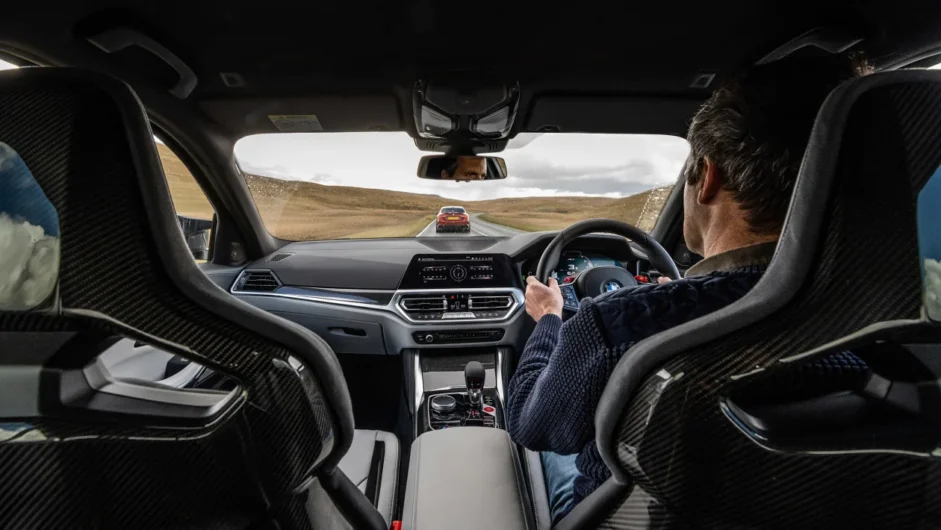
These seats are available for $4485, or as part of the already mentioned optional M Carbon Pack. Go for the extended leather package and the dash, door cards and lower surfaces lift cabin ambiance even further, making it feel worth the $118k your M3 will have added up to by then – as mad as it sounds.
Of course, there’s a thick-rimmed steering wheel; it wouldn’t be an M-car if there wasn’t a rim that required hands more suited to a slip fielder, although the latest item in the G80 feels slimmer than those of previous generations. The ergonomics are hard to fault, although the seat doesn’t go low enough for those who like the sensation of being sat on the floor, but we’re talking minimal levels of additional adjustment; this isn’t a GR Yaris’s bar stool.
- Design
So, the M3 Competition. Good car. Like, a really good car. Which brings us neatly to the G80 M3’s design, which surely we are over now, aren’t we? Yes, the new grille proves that Audi is not alone when it comes to offering oversized face furniture on its cars. And for some the new face of BMW’s fastest models is on a par with Ripley giving birth to an alien.
See one in a car park or on the road (the new M3, not a Xenomorph), however, and the initial shock dissipates. In a subtle hue it has all the menace you would expect of a full-blooded M-car, a car you get a good feeling about every time you approach it. We like it. There. We’ve said it.
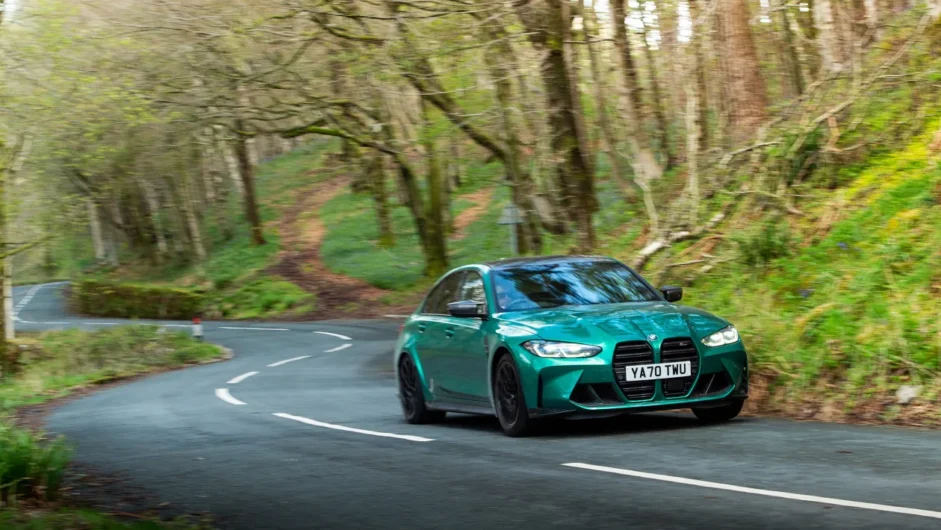
From its rear three-quarters there’s enough aggression from the four exhaust tips, diffuser and gently swollen arches to draw you in. And in profile there’s just the right amount of surface detail mixed with chiselled edges to mark it out from a regular G80 saloon, which looks a little slab-sided by comparison.
Essentially, pick a more gentle shade than the options BMW used for the model’s launch and the G80 M-car looks every part the subtle(ish) supersaloon. It looks big, though. Remove the M3 badge from the bootlid and you’d be forgiven for thinking you were looking at an M5, a consequence of a set of haunches that a second-row forward would be proud of.
This article originally appeared at evo.co.uk
Copyright © evo UK, Dennis Publishing

